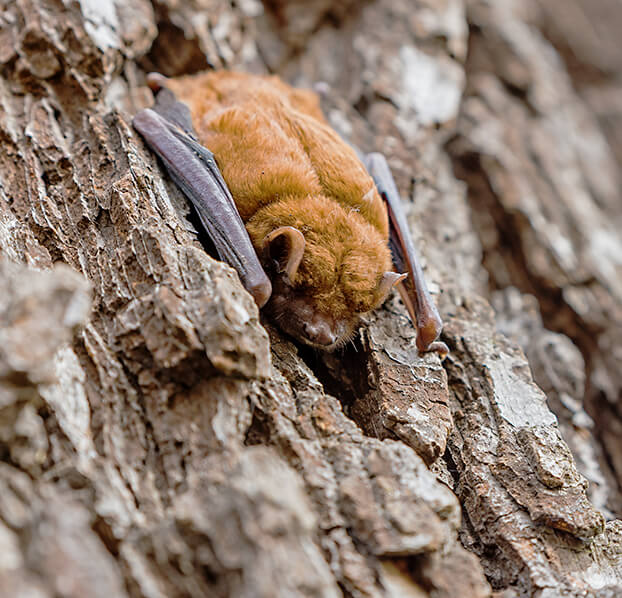
Species Information
Little Brown Bat

| Status |
Endangered Species: species that have a very small population and are at risk of extinction in the wild. |
| Listed | February 9, 2018 |
| Family |
Vespertilionidae |
| Description | Mouse eared with long glossy brown to golden fur |
| Habitat | Forest or streams |
| Food | Insectivore |
| Reproduction | One pup annually |
| Threats |
Deforestation and White Nose Syndrome |
| Range | Widespread North America |
The Little Brown Bat (Myotis lucifugus) is a species of microbat found in North America and is one of the most common bats in the United States. They typically measures 3 to 4 inches in length with a wingspan of 8 to 10 inches, and they weighs between 0.2 and 0.5 ounces. Bats can live up to 30 years and are insectivorous feeding on a variety of small flying insects like flies, moths, and mosquitoes and use echolocation to locate their prey and navigate in the dark. They are normally nocturnal, roosting in large numbers during the day, and capable of long-distance migrations, though most prefer to remain within the same region throughout the year and hibernate in winter.
They play an important role in the environment by helping to keep insect populations in check. They are responsible for eating large numbers of mosquitos, moths, and other night-flying insects, protecting crops from destruction. Additionally, their droppings, known as guano, are a valuable fertilizer for plants.
The Little Brown Bat is listed as endangered due to its vulnerability to habitat loss, destruction of roosting sites, and the destruction of its food sources by pesticides and other pollutants. Additionally, the species is affected by White Nose Syndrome, an infectious disease caused by the fungus Pseudogymnoascus destructans. The fungus thrives in cold temperatures and causes bats to wake up more frequently during hibernation, leading to dehydration, starvation, and death. The disease has spread rapidly across the United States and has affected numerous species of bats. The bat has been particularly hard hit by White Nose Syndrome with mortality rates reaching nearly 100% in some areas.
